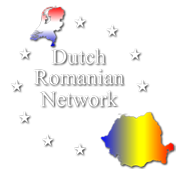Newsletter June 2022

Mazars Romania new sponsor of Dutch Romanian Network!
Mazars Group is an international, integrated and independent organization. They specialize in audit, accountancy, tax services and consulting. Mazars operates in 86 countries, including Romania and the Netherlands. Worldwide, 2,000 professionals work across 300 Mazars branches.
 Today, much is expected of you as an entrepreneur. You are supposed to be an expert in all (foreign) markets, so the focus is not always in the right place. This makes it difficult to keep up with current developments and accurate insights in your field. Mazars University is the training and knowledge institute supporting you in this process.
Today, much is expected of you as an entrepreneur. You are supposed to be an expert in all (foreign) markets, so the focus is not always in the right place. This makes it difficult to keep up with current developments and accurate insights in your field. Mazars University is the training and knowledge institute supporting you in this process.
 As Head of Tax within Mazars Romania, Edwin has led an energetic and passionate team of true professionals since 2014, when he joined the firm as a partner. Before joining Mazars, Edwin worked for 15 years at PricewaterhouseCoopers (PwC) in the Netherlands and Romania (between 1991-2006), holding senior positions in corporate real estate departments. Edwin was a board member of the Dutch Romanian Chamber of Commerce (NRCC). Currently, he is associated with the Dutch Romanian Network (DRN) as a member of the Advisory Board. – Edwin has over 30 years of experience in finance and taxation, including 23 years as a tax and financial advisor in Romania, so can rightly be called a pioneer! He has developed his competencies and expertise in professional advisory services relating in particular to corporate tax, personal income tax, mergers and acquisitions, due diligence and international tax. He successfully completed several institutional real estate projects on the Romanian market, from land acquisition to the sale of stores and offices. – With a passion for teaching the next generation of changemakers, Edwin has written several articles on tax issues and has been a speaker at several seminars and conferences, as well as on national and international tax panels. – Edwin is a graduate of the Haarlem Business School and the Dutch Federation of Tax Advisers in the Netherlands. Professional Memberships – Dutch Register of Tax Advisors (RB); – The Romanian Chamber of Tax Advisors (CCF). Sector experience – Banking and capital markets – Insurance – Real estate – Energy, infrastructure & environment
As Head of Tax within Mazars Romania, Edwin has led an energetic and passionate team of true professionals since 2014, when he joined the firm as a partner. Before joining Mazars, Edwin worked for 15 years at PricewaterhouseCoopers (PwC) in the Netherlands and Romania (between 1991-2006), holding senior positions in corporate real estate departments. Edwin was a board member of the Dutch Romanian Chamber of Commerce (NRCC). Currently, he is associated with the Dutch Romanian Network (DRN) as a member of the Advisory Board. – Edwin has over 30 years of experience in finance and taxation, including 23 years as a tax and financial advisor in Romania, so can rightly be called a pioneer! He has developed his competencies and expertise in professional advisory services relating in particular to corporate tax, personal income tax, mergers and acquisitions, due diligence and international tax. He successfully completed several institutional real estate projects on the Romanian market, from land acquisition to the sale of stores and offices. – With a passion for teaching the next generation of changemakers, Edwin has written several articles on tax issues and has been a speaker at several seminars and conferences, as well as on national and international tax panels. – Edwin is a graduate of the Haarlem Business School and the Dutch Federation of Tax Advisers in the Netherlands. Professional Memberships – Dutch Register of Tax Advisors (RB); – The Romanian Chamber of Tax Advisors (CCF). Sector experience – Banking and capital markets – Insurance – Real estate – Energy, infrastructure & environment
The community to which MAZARS Dutch Desk is directed currently carries out the largest foreign investments in Romania: more than 13 billion euros in total. MAZARS Dutch Desk is headed by Edwin Warmerdam, Tax Partner MAZARS Romania, native speaker of the Dutch language.
For further information: www.mazars.ro
DRN welcomes Okaywood from Rijssen as new member
Okaywood is a wholesale distributor of oak materials and supplies retailers, garden wood stores, specialty stores, sawmills, construction companies, etc.
At Okaywood, only European oak is supplied.

Especially the quality of the structure is just a bit more solid and stronger. This results in a more authentic look. Our finely sawn or planed planks, beams, posts, decking or roof boarding lead to beautiful end products such as for shelters or garden houses.
European oak is known as the European hardwood.
Keywood is looking for international expansion in Romania and are looking for a party to assist them to take over a wood producing company (sawmill/production company).
For further information see website www.okaywood.nl
Sector Logistics and Transport
KLG Europe Romania: Simplify, the business ecosystem of online stores, expands its logistics operations and opens a new e-fulfilment center in Cluj
The new e-fulfillment center has a logistics area of 1,500 square meters and required an investment of 40,000 euros. Currently, the company processes more than 30,000 orders per month, an increase of 55% compared to the same period last year.The new 1,500 square meter e-fulfillment center in Cluj-Napoca offers logistics services for online stores. Customers benefit from integrated services for the entire supply chain, from transportation of supplies to product receipt, storage, packaging and labeling, as well as access to the receipt of returned products.
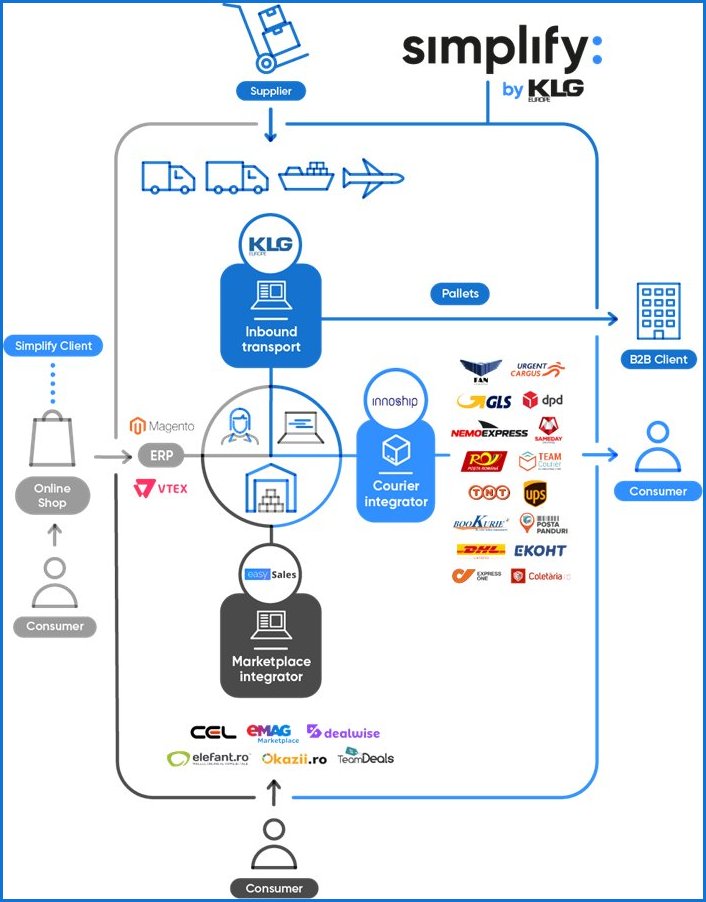
“The opening of the new e-fulfillment center in Cluj-Napoca contributes to the company’s growth strategy, as we expand our range of fulfilment and logistics services for the Romanian e-commerce market. We are pleased to have customers who have tripled their volumes compared to the same period last year and we expect to finish the year with a 20% increase in sales. Therefore, to best meet their needs, we want to continue to grow and diversify services in line with the company’s strategic investments of the past year. As a result, the development of the Simplify platform and integrated digital solutions in warehouses will remain our top priorities in the coming years,”  says Carmen Vasilescu, Logistics Director. Following an investment of approximately 500,000 euros, the company continues to develop the solution
says Carmen Vasilescu, Logistics Director. Following an investment of approximately 500,000 euros, the company continues to develop the solution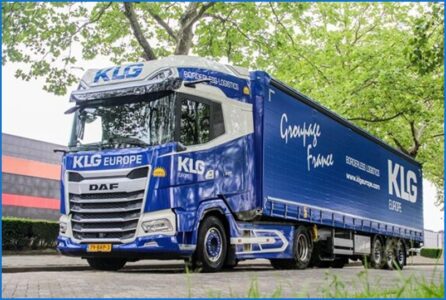 for the integration of supply chain services to give customers easy access to information. Real-time data, such as the status of all delivery shipments, packages to reach customers who have ordered online, or inventory and packages to be delivered, can be viewed through the Simplify portal. The company is incrementally investing in automation and warehousing, and the goal for this year is to make a number of acquisitions and changes to the Simplify platform. For example, the warehouse area will be reorganized and new process automation systems will be implemented, such as the purchase of conveyors and an elevator for the platform floors, the addition of validation points and other equipment that will contribute to the efficiency of the order preparation processes for web stores. “We’re dealing with a market where customer demands are becoming more diverse and complex, and that continues to create operational challenges for online stores. Therefore, we are constantly working to improve the performance of our services with a focus on speed, so that the companies that use our e-fulfilment services receive deliveries as quickly as possible,” adds Carmen Vasilescu, Logistics Director. Simplify’s portfolio is up 15% from the same period last year, with customers benefiting from the entire business ecosystem: from transportation to supply to all aspects of logistics – product receipt, warehousing, value-added services (bundle-type packages, special packaging, labeling or relabeling), order preparation and return logistics. Customers include Sneaker Industry, Fashion Lifestyle & Distribution, Sport Couture, GBB, Senses and others
for the integration of supply chain services to give customers easy access to information. Real-time data, such as the status of all delivery shipments, packages to reach customers who have ordered online, or inventory and packages to be delivered, can be viewed through the Simplify portal. The company is incrementally investing in automation and warehousing, and the goal for this year is to make a number of acquisitions and changes to the Simplify platform. For example, the warehouse area will be reorganized and new process automation systems will be implemented, such as the purchase of conveyors and an elevator for the platform floors, the addition of validation points and other equipment that will contribute to the efficiency of the order preparation processes for web stores. “We’re dealing with a market where customer demands are becoming more diverse and complex, and that continues to create operational challenges for online stores. Therefore, we are constantly working to improve the performance of our services with a focus on speed, so that the companies that use our e-fulfilment services receive deliveries as quickly as possible,” adds Carmen Vasilescu, Logistics Director. Simplify’s portfolio is up 15% from the same period last year, with customers benefiting from the entire business ecosystem: from transportation to supply to all aspects of logistics – product receipt, warehousing, value-added services (bundle-type packages, special packaging, labeling or relabeling), order preparation and return logistics. Customers include Sneaker Industry, Fashion Lifestyle & Distribution, Sport Couture, GBB, Senses and others
Automotive Sector
Truck manufacturer “Made in Maramureș” starts production of new vehicle
ATP Trucks, a Romanian company that produces transport vehicles, announced the start of assembly for the first batch of Truston 4×2 tractors, in the low-cab version.
ATP Trucks Automobile, the company that produces road and passenger cars in Romania, announces series production for the first batch of Truston 4 × 2 tractors, 480 hp, in the low-cab version, automatic transmission.
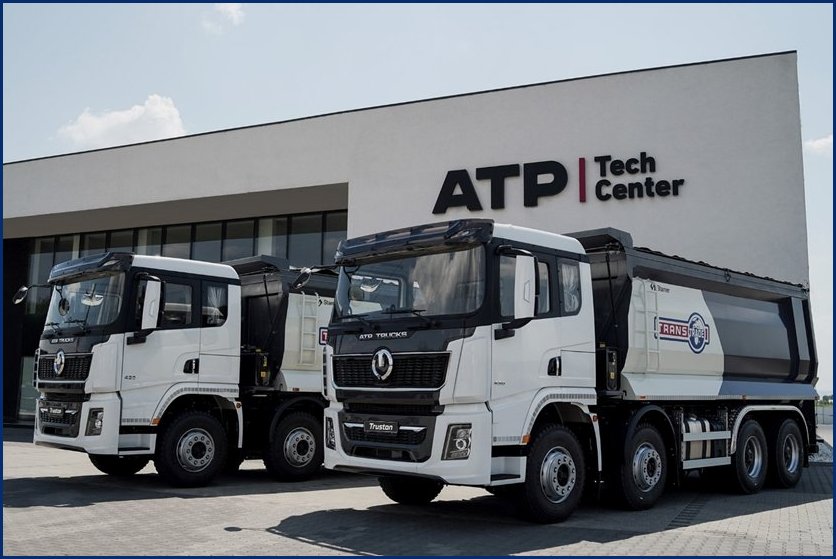
Exactly one year ago, the first high-end 4×2 tractor came off the production line. Currently, the testing and approval processes are being completed, so we have moved to the mass production phase. Currently, the diversified portfolio repositions the ATP Group as an integrator of products and systems for the mobility of people and goods.
With an activity of more than 27 years in the automotive sector, ATP Group has developed the automotive manufacturing segment from 2019. On August 28, 2019, ATP Trucks launched the first Truston 8×4, 430 hp model – dump truck and concrete mixer. In 2021, the first charge of the ATP Trucks 8×4 truck was registered. The changes made consisted of restyling the exterior of the cabin and the interior, respectively, which is completely new. The truck also received Stamer builds based on the design and technical features defined by ATP Trucks engineers. Also in 2021, in May, ATP Trucks announced the launch of the electric bus ATP Bus.
“Courage and will must be constantly trained so that we can reach the highest goals. We work with professionalism and I hope for real opportunities to fulfill a future in which we can correctly understand the need for evolution in Romania “, believes Mircea Cirț, President of ATP Group.
The new production phase of 4 × 2 480 hp tractors includes a first batch of 15 units configured in the version with automatic transmission and low cab.
“The Truston 4 × 2 480 hp tractor is suitable for the construction, special cargo and piece goods segments and came in response to market demand, as well as our ability as we gained experience as an automaker. The biggest challenges are the delivery times of the components in the supply chain, respectively of the raw materials if we refer to the Stamer superstructure we produce,” says Florin Crișan, General Manager of ATP Trucks.
The Truston 4 × 2 480 HP tractor is a heavy duty vehicle: the Truston 4 × 2 is powered by the WP13.480E63 Euro6 diesel engine (Powered by Weichai) and the chassis is made of a 9mm profile. Front axles: 7.5 t, rear axles: 13 t, 700 l tank, the braking system is determined by Wabco technology. Optionally, the product can be configured with automatic transmission, AMT transmission (Automatic Mechanic Transmission) or manual transmission. Notable is the easy access to the trailer’s hitching area, here it is provided with additional light but also with an accessible and safe work platform.

The rear air suspension provides easy handling for hitching and unhitching the trailer and increased driving comfort. The ergonomic remote control, with intuitive operation, facilitates pneumatic adjustment of the rear axle.
The interior offers first-class comfort, with a Grammer driver airbag, a multimedia center, a single bed with memory foam mattress, curtains, mood lighting, generous and easily accessible storage. For the high cabin, we have bunk beds and a correctly laid out upper section of the cabin. Truston cabins are characterized by the clarity and simplicity of the on-board instruments, as well as by the superior comfort elements included in the standard equipment. The product comes with a 24-month warranty, with no mileage limitation, as well as the option to extend.
 “With our new product, we want to enter primarily the construction market and internal transportation services. We also offer a very good service segment for our products nationwide. I would also like to mention that the https://atp-trucks.com/confort-interior/verplichte test period included operation of the new product at maximum speed. Truston tractors in high cab and low cab versions are used extensively by our partners in applications such as: dump truck hitch for transporting aggregates and grain, trailer hitch for transporting equipment. We have always taken constructive feedback from users, analyzed it together with our engineers and technicians and it has been very important in our and our product evolution “, added Lucian Varga, General Manager of ATP Motors, distributor of ATP Trucks products.
“With our new product, we want to enter primarily the construction market and internal transportation services. We also offer a very good service segment for our products nationwide. I would also like to mention that the https://atp-trucks.com/confort-interior/verplichte test period included operation of the new product at maximum speed. Truston tractors in high cab and low cab versions are used extensively by our partners in applications such as: dump truck hitch for transporting aggregates and grain, trailer hitch for transporting equipment. We have always taken constructive feedback from users, analyzed it together with our engineers and technicians and it has been very important in our and our product evolution “, added Lucian Varga, General Manager of ATP Motors, distributor of ATP Trucks products.
Through the specialized advisory services offered by the ATP Motors dealer, customers can access flexible leasing financing. It also offers the simplest trade-in system: for the advance on TRUSTON products, both used cars and vans can be traded in, as well as transport or construction trucks, trailers, semi-trailers or equipment.
ATP Group has been active in the automotive industry since 1995 as a provider of products and then integrated services for transportation professionals. In 2019, the innovation strategy began with the production of the first ATP Trucks products – Truston dump truck and concrete mixer, which led to the consolidation of ATP Group’s position in the Romanian automotive market and later to a redefinition of its business activities: ATP Trucks – truck production, ATP Bus – production of buses, ATP Motors – car dealer, Hefton – construction machinery and equipment, Stamer – trailers / superstructures, ATP Automotive – production and distribution of truck parts.
Romanian state aid to freight and passenger carriers
Some 3,000 road freight and passenger operators will benefit from a 300 million lei state aid scheme to offset fuel price increases caused by the war in Ukraine and avoid bankruptcy.
The support is provided in the form of a subsidy, the amount of which is 50 euros per liter of fuel purchased, but does not exceed 400,000 euros per company.
In addition to preventing bankruptcies, one of the reasons for the state aid scheme is to prevent a possible reorientation of road haulers in refueling vehicles in other states that have lower prices. demonstrated that in April 2022, fuel costs accounted for 55% of carriers’ operating costs, compared to 47% in December 2021.From the beginning of the year to date, fuel prices have increased by 39%. The proposed state aid scheme does not apply to companies engaged in the processing and marketing of agricultural products.
The identified and proposed measure consists of a compensation of 50 bani per liter of fuel purchased, not exceeding the RON equivalent of 400,000 per company, and is applicable to road transport operators carrying out activities of:
- (a) road transport of goods for own account or for hire, using motor vehicles or articulated vehicle combinations intended exclusively for the road transport of goods and having a maximum permissible total weight of at least 7.5 tons;
- (b) road transport of goods on own account or for remuneration, by means of motor vehicles or articulated vehicle combinations intended exclusively for the road transport of goods and having a maximum permissible total weight of more than 3.5 tons, but not more than 7.5 tons;
- (c) national and international carriage of goods by road for consideration, using motor vehicles or combinations of vehicles intended exclusively for the carriage of goods by road and having a maximum permissible total weight of more than 2.5 tons but not more than 3.5 tons;
- (d) passenger transport, regular and occasional, including local public passenger transport, by a motor vehicle of category M2 or M3, as defined in Directive 2007/46/EC of the European Parliament and of the Council of 5 September 2007 establishing a framework for the approval of motor vehicles and their trailers, and of systems, components and separate technical units intended for such vehicles.
In April 2022, fuel prices represented 55% of carriers’ operating costs, compared to 47% in December 2021.
From the beginning of the year to now, the price of fuel has increased by 39%.
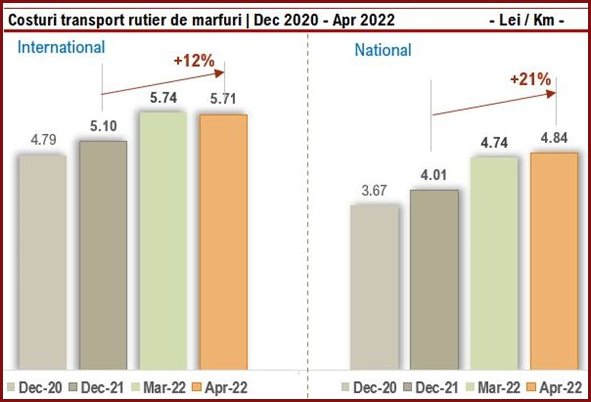
During Dec. 2021 – Apr 4. By 2022, the operating costs of road freight transport increased by 21% for domestic transport and by 12% for international transport.
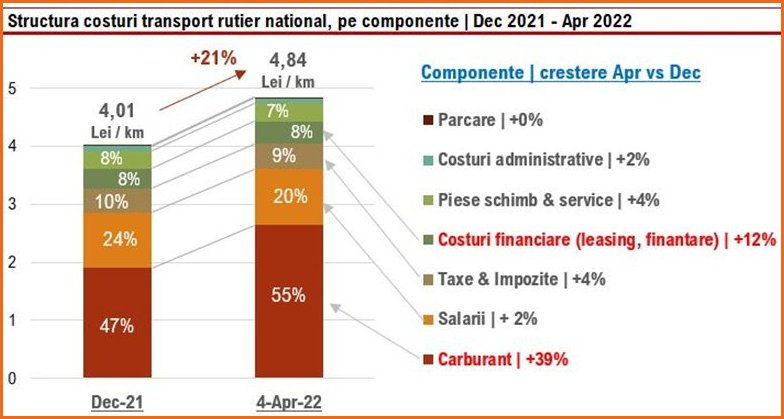
Road transport companies have a net profit margin of 6-7%. Given the 21% increase in costs, carriers do not have the ability to absorb them, most risk bankruptcy.
DRN comments : This regulation is applicable to the transport companies established in Romania, including foreign companies.
However, the regulation is only for vehicles up to a max weight of 7.5 tons, that is, it applies to small vans and not trucks, although this seems very strange to us.
In principle we are against subsidies, because they do not help to solve problems and finally the market will have to pay for higher energy costs, as is the case in other sectors.
Housing sector
Bucharest has some of the most affordable housing in the EU
Bucharest – Ilfov region ranks 10th out of 27 EU capitals in terms of gross domestic product per capita
Of the top ten EU capitals by gross domestic product per capita, Bucharest ranks fourth in terms of most affordable housing according to a report by SVN Romania.
Bucharest ranks second in Central and Eastern Europe when it comes to EU capitals with the most affordable housing.
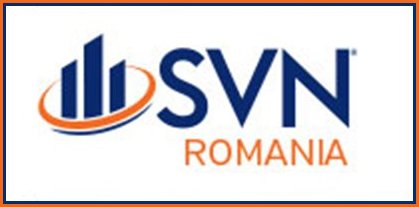 House prices in Bucharest are among the most affordable in the European Union (EU), according to a report by real estate consultant SVN Romania based on official Eurostat statistics and data on national average wages and house prices in EU capitals.
House prices in Bucharest are among the most affordable in the European Union (EU), according to a report by real estate consultant SVN Romania based on official Eurostat statistics and data on national average wages and house prices in EU capitals.
The Bucharest – Ilfov region is one of the most developed in the EU in terms of gross domestic product per capita, expressed in PPS (EUR), a statistical currency that eliminates price differences among EU member states. Thus, Eurostat data shows that Bucharest-Ilfov ranks tenth among the 27 capitals of the EU and its related regions.
Among the first ten capital cities, Bucharest ranks fourth in the ranking of the most affordable housing, according to SVN calculations based on national average wages and housing prices in analyzed cities.
For example, 115 average wages (or a period of 9.6 years) are required to purchase a one-bedroom apartment with a net area of 60 square meters in Bucharest. The first three positions are occupied by Brussels (Belgium), with 86 medium-high wages (or a period of 7.2 years), Copenhagen (Denmark), with 100 medium-high wages (8.3 years) and Dublin (Ireland) with 101 medium-high wages (8.4 years). ) needed to buy an apartment with 60 square meters of net area.
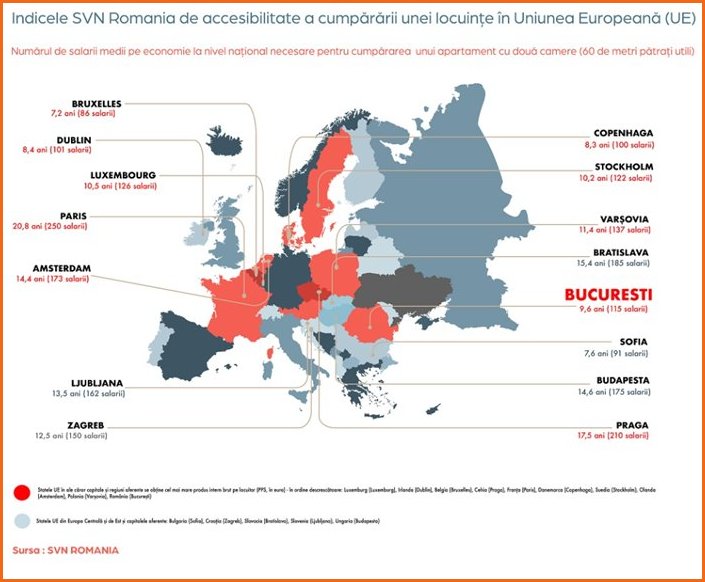
Less affordable housing compared to Bucharest can be found in Warsaw (Poland), with 137 medium wages (11.4 years), Amsterdam (Netherlands), where 173 medium wages are required, or a period of 14.4 years, Prague (Czech Republic), where 219 medium wages (17.5 years) are required and Paris (France), last in the list of the ten most productive capitals by GDP per capita, with a level of 250 medium wages, or a period of 20.8 years.
“In less than 15 years since Romania joined the European Union, the Bucharest region became one of the top ten capitals in the community in terms of gross domestic product per capita, but also retained a very good accessibility for buying a new home, despite price increases and inflationary trends. Bucharest has a huge development potential in the coming decades, both economically and demographically, implicitly for the real estate and housing market,” said Andrei Sarbu , CEO of SVN Romania.
Bucharest has one of the most affordable housing prices, even in Central and Eastern Europe. For example, only Sofia (Bulgaria) has more affordable houses, with a level of 91 average wages nationally, or a period of 7.6 years, required to purchase a one bedroom apartment.
Bucharest ranks second in the region, ahead of Zagreb (Croatia), which requires 150 medium-high wages (12.5 years), Ljubljana (Slovenia), with a level of 162 medium-high wages (13.5 years), Budapest (Hungary), which requires 175 medium-high wages (14.6 years), and Bratislava (Slovakia), with a level of 185 medium-high wages, or a period of 15.4 years.
SVN Romania is one of the main real estate advisors active in Romania and the leader of the local housing market. The company also has three regional offices, in Brasov, Cluj – Napoca and Covasna, and is the real estate advisor and exclusive agent of more than 20 residential projects in Bucharest and other regional centers. SVN International Corp. has 200 offices in eight countries and regions, with more than 1,600 consultants and staff.
Agri & Food sector
Romania, in the top of the countries with the best food in the world
Romania has one of the most highly regarded dishes in the world, according to the world’s top 50 gastronomy compiled by TasteAtlas. The June 2022 list put our country in fourth place, after each country was voted based on the 30 best traditional dishes and beverages “TasteAtlas online users from around the world have given Romania a place of honor in the top of world gastronomy! Our traditional products were greatly appreciated, which is why we were ranked fourth,” the Ministry of Entrepreneurship and Tourism wrote on Facebook.
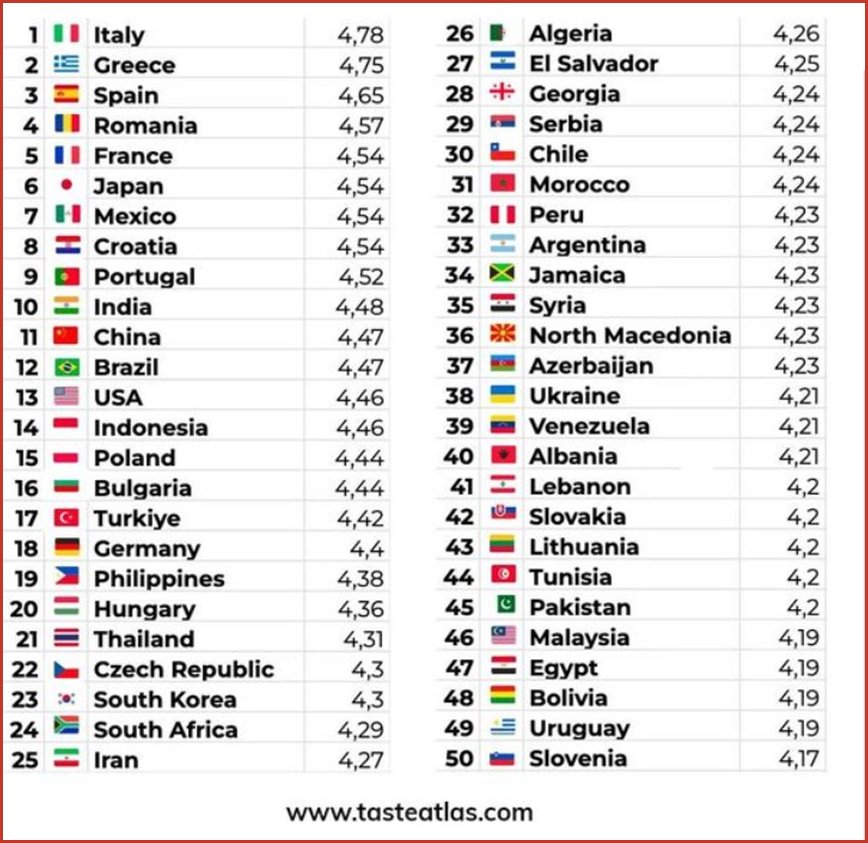
Romanian food and drink Twitter users responded quickly after the top was posted. “Hey, I’m curious about Romania, which finished in fourth place. Can anyone tell me something about Romanian gastronomy, “asked the user @ ClimateChangeS7. Italy ranks first in the world’s top best food, followed by Greece and Spain. Poland, Bulgaria and Turkey are ranked 15th, 16th and 17th. Top 50 best gastronomy in the world, according to TasteAtlas. It is striking that the Benelux countries do not appear in the ranking.
Editorial Newsletter: Precisely because the image of Romania in our country leaves everything to be desired, this letter tries to do its part to bring the country better into the limelight, because google and Wikipedia give a rather fragmented and sometimes incorrect picture; the latter information carrier still sees it as a Balkan country. Dutch companies, on the other hand, know how to find their way to this country, which is why the Netherlands has been the largest investor(approx.5600) in the country for almost a decade, which also has a lot to offer in terms of tourism. A pleasant side effect is that the Romanians know how to give the savoir-vivre c.q. art of living excellent shape.
Romania’s first single malt whisky launched
The first single malt whisky from Romania was introduced to international markets with a worldwide tour that began on World Whisky Day (May 21). Carpathian is the first single malt to be aged in ex-Romanian wine barrels.

Alexandrion Group, the largest producer and distributor of spirits and wine in Romania, will present the Carpathian range of single malts with a series of global events throughout the year.The tour began on May 21 in the U.S. and will present a limited edition of 930 bottles for global allocation.
Nawaf Salameh, founding chairman of the Alexandrion Group, said, “Since 2017, we have been distilling and maturing single malt whiskey liquid without wanting to publicize it, sourcing barrels from across Europe and the U.S. This is the first chance for single malt lovers to enjoy a Carpathian whisky.”
 The three inaugural expressions that will be presented during the tour include a Feteasca Neagra and Pinot Noir whiskey from the brand’s Romanian Wine Cask Selection, and a Madeira cask finished whiskey, which is part of the Spanish and Portuguese Wine Cask Selection.
The three inaugural expressions that will be presented during the tour include a Feteasca Neagra and Pinot Noir whiskey from the brand’s Romanian Wine Cask Selection, and a Madeira cask finished whiskey, which is part of the Spanish and Portuguese Wine Cask Selection.
Both the Feteasca Neagra and Madeira-finished whiskies were initially aged in first-fill Bourbon barrels, while the Pinot Noir expression was aged exclusively in Romanian Pinot Noir barrels.
The use of Romanian wine barrels is a “world first” in single malt production, despite Romania’s 2000-year history of wine production. After the US tour, it will continue to the UK in July and will conclude in Romania in the last quarter of the year with a commercial launch of 10,000 bottles with 11 finishes.
Carpathian Single Malt is distilled, matured and bottled at the Alexandrion Sabre 1789 Distillery, located near the Carpathians(Ploiesti). It is made from 100% malted barley produced in Romania, with sub-Carpathian water, and it is bottled at 46% ABV(alcohol by volume).The whisky is led by master distiller Allan Anderson, who has more than 30 years of experience in Scotch whisky and Irish whisky distillation. “This whisky perfectly showcases our distillery terroir,” says Anderson. “The tremendous flavor impact of our malted barley, pure sub-Carpathian water combined with the unique flavors of Romanian and Portuguese wine barrels make Carpathian Single Malt an outstanding whisky that will undoubtedly become one of the best in the world as it matures. “There is no whisky anywhere in the world that has not been in the cask for at least three years,” says Dragoș Mateescu, Single Malt Society Coordinator. “We are five years old.”
As for the most important aspect when it comes to single malt, that is the barrel.In this industry, it is said that the barrel makes whiskey,” concluded Dragoș Mateescu.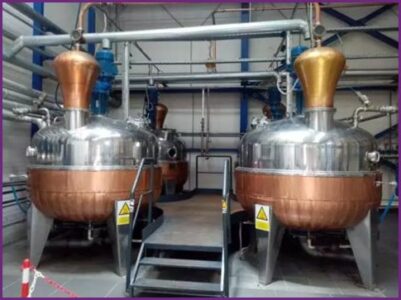
Last but not least, the Carpathian single malt producers also showed that the Romanian climate, which is almost always 5 ° C higher than that in Scotland , the world’s leading whisky producer, was very important in the production process.
Carpatin Single Malt will not be sold through chain stores, but through liquor stores.
Editorial DRN Newsletter: Spirits and wines offer import and export opportunities and is linked to the tourism sector to some extent. It is worth considering organizing a professional (not for individuals) tasting to combine the useful with the pleasant. If desired, this can include Romanian cuisine, as Romania ranks high – also internationally – in the field of gastronomy.
Romanian grain exports reach records in agricultural year 2021-2022
The record grain crops harvested last year resulted in robust exports, as shown in official data for the period July 2021 – January 2022, reviewed by Lantulalimentar.ro. For example, 0.74 mln tons of wheat were shipped from Romania in July 2021 alone, a record in the last 16 years. In August 2021, exports rose to 1.0 mln tons, the first time in a month they exceeded one million tons. The peak was reached in September 2021: 1.27 mln tons.

Corn exports also set new records. In October 2021, total exports reached nearly one million tons, the highest in the past sixteen years. The previous record was 0.52 million tons. In November 2021, exports were 0.54 mln tons and in December 0.46 mln tons – unprecedented levels for the last two months of the year. A total of 2.56 million tons of Romanian corn was sold on international markets between July 2021 and January 2022. The largest export to date was 3.68 mln tons in the 2019/2020 marketing year. The record could be exceeded this year.
Romania ranks first in the EU in the number of vineyards
While Romania is ranked in Europe for the number of vineyards – almost 37% of the total in the European Union – they have an extremely small acreage. Despite the generally excellent quality of its wines, it has not yet succeeded in generating international attention for them. Using the Eurostat figures, the DRN conducted a brief survey.
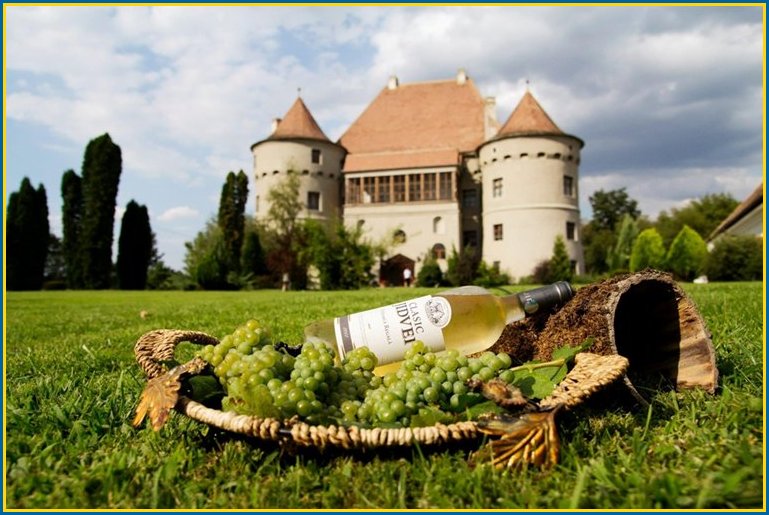
The European Union had about 45% of the world’s wine regions according to the latest Eurostat figures (i.e. 2020 ). Of the 3.2 million hectares of vineyards in the EU, nearly three-quarters are in Spain, France and Italy. Next in this ranking – that is, in terms of area – is Romania, accounting for 5.7% of the total . Portugal, Germany and Greece follow.
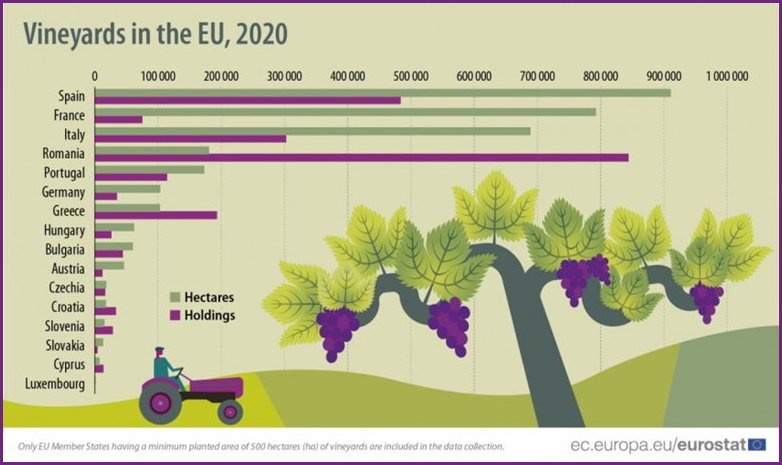
Size of cultivated area
On the other hand, they have the largest number of vineyards: 844,000 out of a European total of 2,227,672 or 37.9% . The reason they are in first place is that Romanian vineyards have very small areas. The average in Romania is 0.2 hectares, while in the EU the average is 1.4 hectares – and in France 10.5 hectares.
Age of vines
Another problem identified by Eurostat in the case of Romania is the age of the vines: almost two-thirds are older than 30 years Moreover, replanting is below the European average: only 12% of their plants are younger than 3 years.
Quality Registers
Also, less than 28% of the area cultivated with vines in Romania is used to obtain wines that are considered quality wines, that is, with a protected designation of origin or a protected geographical indication. 72.1% of vineyards produce “table wines” , which are not included in the quality product registers.
Too strong a focus on white wine
Grapes for red wines dominate at the European level, but not in Romania. Because 62.7% of the vineyard grapes produce white wine.
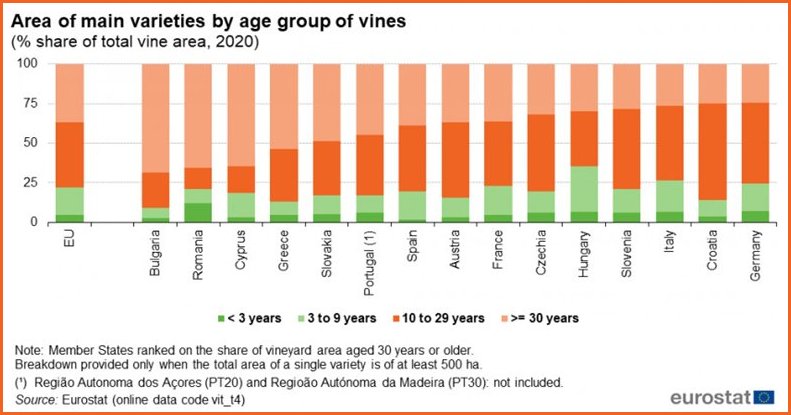
The most widely grown varieties, out of the total area at EU level, are Tempranillo (Spain) and Airen (Spain and Portugal). The only varieties grown in all states are Merlot Noir and Chardonnay.
Feteasca Neagra or Black Maiden and Black Fairy is the jewel of Romanian indigenous grape varieties with a thousand-year history. Seeds of Feteasca Neagra were discovered in ancient remains from Romania, more than 2000 years old.
Dutch veal farming sector orientates on opportunities in Romania
Partly as a result of the Romanian Business Day held, Agriprogess in the person of Pieter Helfferich(member of the DRN Task Force Agri & Food Romania) and in cooperation with the Dutch Association of Calf Keepers organized a study tour to Romania from June 17 to 21 this year.
 Dutch agriculture and horticulture are under severe pressure due to the various environmental measures, which are coming (especially through the nitrogen plans). It is expected that production within the EU will increasingly shift to the East of Europe. Romania is a country with a lot of still not always optimally utilized land, where a lot of growth is going to take place, while in the Netherlands the chains are going to shrink. Reason for the group of calf farmers to take a look around.
Dutch agriculture and horticulture are under severe pressure due to the various environmental measures, which are coming (especially through the nitrogen plans). It is expected that production within the EU will increasingly shift to the East of Europe. Romania is a country with a lot of still not always optimally utilized land, where a lot of growth is going to take place, while in the Netherlands the chains are going to shrink. Reason for the group of calf farmers to take a look around.

Several successful Dutch and Romanian companies were visited during the trip. Dutch Trading Srl in Mizil(www.dutchtrading.ro), the beautiful company of Gert Bronkhorst, the largest calf trader in Romania. DN Agrar in Garbova, the listed company of Jan de Boer with 8,000 dairy cows and 11,000 ha of land (www.dn-agrar.eu). Carpathian Meat in Marpod (www.karpaten-meat.com), specializing in grass-fed Black Angus meat (the alternative to Argentine steak).There are currently about 80,000 animals in Romania. Furthermore, several contacts have been made with possible buyers/slaughterhouses of the calves.
For more detailed information, please contact Pieter Helfferich of Agriprogress, Tel+31 6 5378 2889, Email pieter@agriprogress.com
Tourism and Imaging Sector
Travel agents can get 40 euros for every foreign tourist who spends at least four nights in Romania
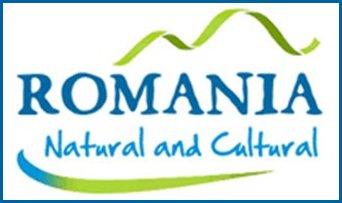 Tour operators and travel agencies may receive 40 euros for each foreign tourist who purchased and paid for a tourist stay or circuit of at least four nights in our country through an incoming tourism
Tour operators and travel agencies may receive 40 euros for each foreign tourist who purchased and paid for a tourist stay or circuit of at least four nights in our country through an incoming tourism organization agency in Romania, a project ter minimis support scheme published in public consultation by the Ministry of Entrepreneurship and Tourism
organization agency in Romania, a project ter minimis support scheme published in public consultation by the Ministry of Entrepreneurship and Tourism
“Inbound tourism is especially important, as it is an export activity for the country, through the foreign exchange contribution brought to Romania by foreign visitors. For this reason, we are launching for public consultation the de minimis regulation that will contribute to our repositioning, as a competitive destination. The initiative will facilitate the economic activity of the private sector, which translates into attracting foreign tourists, increasing tourism revenues and thus increasing the contribution of tourism to the GDP, “said Constantin-Daniel Cadariu, Minister of Entrepreneurship and Tourism.
DRN applauds this modest initiative if it implies a turnaround from a decade of increasingly narrow focus on the tourism sector. One suggestion on our part would be to include foreign posts. It seems to us a good addition to the tasks of the economic and trade attachés. It will help the perception of Romania
Energy Sector
Romania has the potential to become the largest gas producer in the EU
Romania is now the second largest producer of natural gas in the European Union after the Netherlands. With the closure of the Groningen field (2022), Romania has the potential to become the largest natural gas producer in the EU.
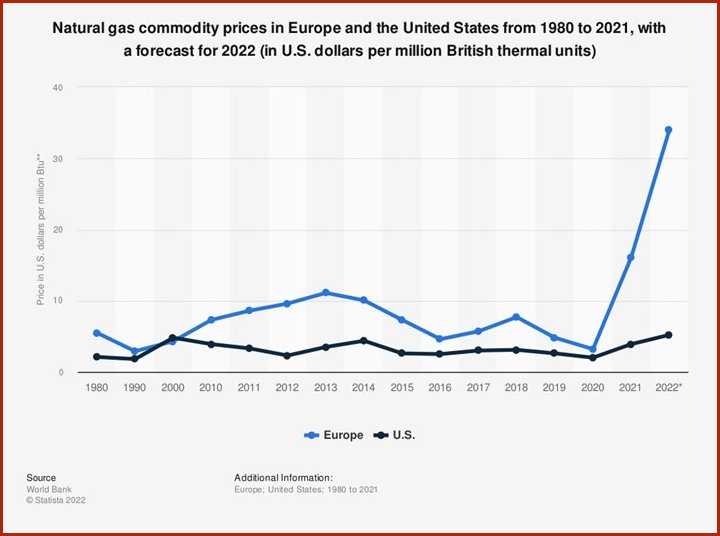
The natural gas production sector has one of the largest contributions to the state budget. For example, in the 2013-2021 period, additional taxes on natural gas production alone represented more than 8 billion lei, taxes that were instituted to protect vulnerable consumers.
Serbia wants to build gas pipeline to Romanian border
Serbian Energy Minister Zorana Mihajlovic said recently that Serbia would prepare the design and technical documentation for the construction of a 12.8-kilometer gas pipeline connecting Mokrin and the border with Romania, allowing Serbia to connect to the Transgaz and BRUA pipeline.
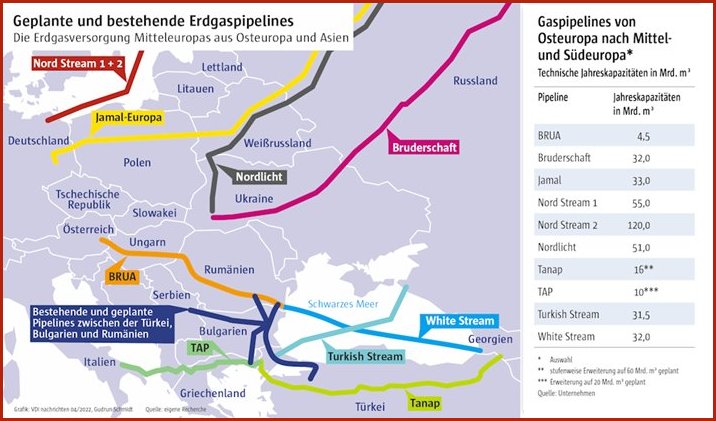
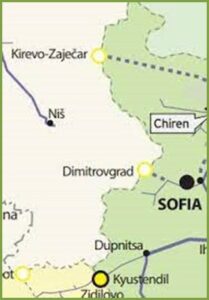 Zorana Mihajlovic met with her Romanian counterpart Virgil Popescu in Bucharest on Monday to discuss the implementation of joint projects, the progress of cooperation in the field of renewable energy and the construction of a gas interconnector. “Serbia and Romania have good relations and this is an excellent basis to discuss future joint projects. This year, Serbia began construction of the Nis-Dimitrovgrad gas pipeline, which will allow us to receive gas from both the LNG terminal in Greece and Azerbaijan, but our plan is to connect to neighboring countries via gas pipelines. Is only one way to achieve security in this region “, said Zorana Mihajlovic.A gas interconnector between Serbia and Romania is a project of common interest, Zorana Mihajlovic added, adding that in her opinion, the implementation of this project could be accelerated.The project for the interconnection of the national natural gas transportation system with the similar natural gas transportation system in Serbia consists of the construction of an interconnection pipeline in the direction of Arad – Mokrin over a length of about 97 kilometers, of which 85 km is in Romania and 12 km in Serbia.
Zorana Mihajlovic met with her Romanian counterpart Virgil Popescu in Bucharest on Monday to discuss the implementation of joint projects, the progress of cooperation in the field of renewable energy and the construction of a gas interconnector. “Serbia and Romania have good relations and this is an excellent basis to discuss future joint projects. This year, Serbia began construction of the Nis-Dimitrovgrad gas pipeline, which will allow us to receive gas from both the LNG terminal in Greece and Azerbaijan, but our plan is to connect to neighboring countries via gas pipelines. Is only one way to achieve security in this region “, said Zorana Mihajlovic.A gas interconnector between Serbia and Romania is a project of common interest, Zorana Mihajlovic added, adding that in her opinion, the implementation of this project could be accelerated.The project for the interconnection of the national natural gas transportation system with the similar natural gas transportation system in Serbia consists of the construction of an interconnection pipeline in the direction of Arad – Mokrin over a length of about 97 kilometers, of which 85 km is in Romania and 12 km in Serbia.
Especially in the Southeast is a jumble of planned gas interconnectors and where Romania has already completed the BRUA pipeline to borders for connection with other countries, already supplying Moldova and Ukraine with Romanian gas.
Sector Infrastructure
Will hinterland connection Constanta and Rotterdam still be in sight?
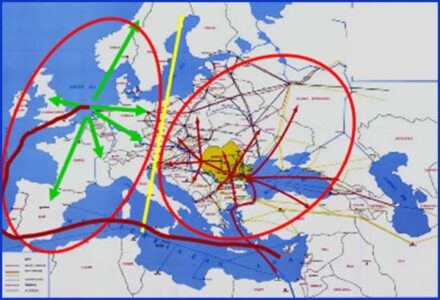 In the context of cooperation between Rotterdam and Constanta, a MoU(Memorandum of Understanding) was signed at ministerial level in 2011. And if you blow the dust off of that, you will discover that among other things, intermodal transport was mentioned in relation to the navigability of the Danube. This reminder surfaced with the recent news that two countries below have submitted a proposal to the EU called “Fast Danube.” Or would that be wishful thinking?
In the context of cooperation between Rotterdam and Constanta, a MoU(Memorandum of Understanding) was signed at ministerial level in 2011. And if you blow the dust off of that, you will discover that among other things, intermodal transport was mentioned in relation to the navigability of the Danube. This reminder surfaced with the recent news that two countries below have submitted a proposal to the EU called “Fast Danube.” Or would that be wishful thinking? 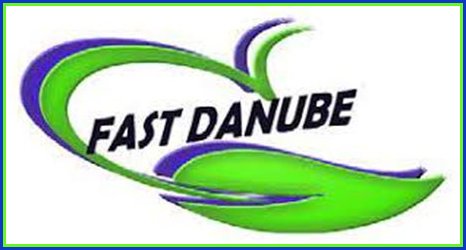
Bulgaria and Romania join the EU for Fast Danube. Both countries are seeking EU funding to ensure normal sailing conditions on the Danube on different days of the year and to allow ships with higher transport capacity to use the waterway, said Bulgarian Minister of Transport and Communications, Nikolai Sabev.He said, quoted by the Transport Ministry, that the two countries are stepping up efforts to effectively implement the European Fast Danube project .
Sabev attended a ceremony for the christening of the Iskar maneuvering ship, owned by the Ruse, Bulgaria-based Danube Exploration and Maintenance Executive Agency. Iskar is the newest component of the agency’s dredging equipment, which allows it to independently 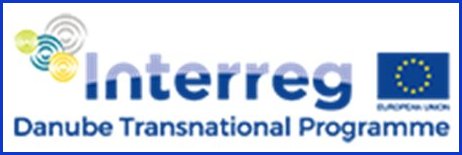 deepening. After the training, the vessel’s crew should begin dredging this summer. Sabev said it was time for Bulgaria to effectively meet its obligations for waterway maintenance, which would significantly increase the efficiency of the river fleets… It is now being assessed and we are seeing changes from day to day Fast Danube is a multi-year project funded under the European Interconnection Mechanism. The project receives 85% EU funding and 15% government funding. The partners of the project are the waterway administrations of Romania and Bulgaria – the Lower Danube Galati River Administration and the Executive Agency for the Exploration and Maintenance of the Danube in Ruse. The total budget of the project is 5,252,000 euros.
deepening. After the training, the vessel’s crew should begin dredging this summer. Sabev said it was time for Bulgaria to effectively meet its obligations for waterway maintenance, which would significantly increase the efficiency of the river fleets… It is now being assessed and we are seeing changes from day to day Fast Danube is a multi-year project funded under the European Interconnection Mechanism. The project receives 85% EU funding and 15% government funding. The partners of the project are the waterway administrations of Romania and Bulgaria – the Lower Danube Galati River Administration and the Executive Agency for the Exploration and Maintenance of the Danube in Ruse. The total budget of the project is 5,252,000 euros.
Shipbuilding Industry
The Black Sea has become a lake full of sharks
At a more critical time than ever, with war on the country’s borders and the Russian Black Sea “conquered” by Russia, Romania has not yet signed a contract for new multipurpose corvettes and the modernization of current frigates, although a winner has been chosen since 2019, and there have been no appeals or obstructions at court for almost a year. Although the Department of Defense announced that the problem would be resolved over the winter, a new postponement has recently come – a delay of a few months given to the builder Naval to come up with a solution to sign the contract.
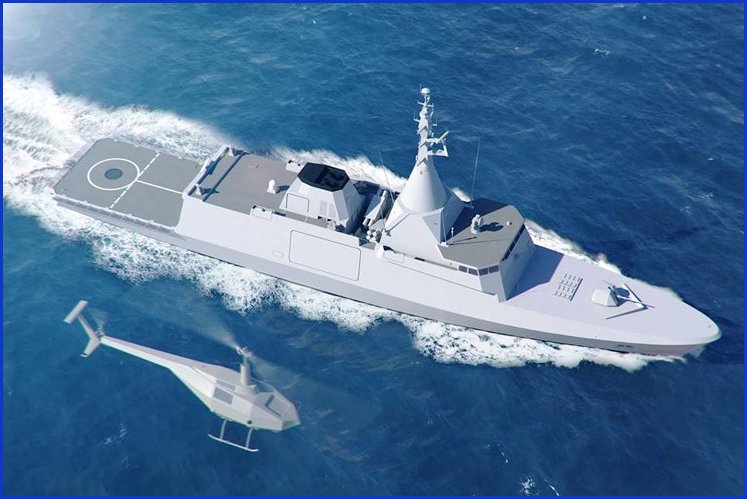
PHOTO – Gowind 2500 Ship / Source: Naval Group
Romanian Ministry of Defense
Recently, after deadlines and missed deadlines to solve the problem, Defense Minister Vasile Dîncu announced again that “we have a small extension” requested by the builder Naval. ” We are not postponing the acquisition, but at the moment it is an extension that has been requested by the Association [Naval Group – Constanţa Shipyard] to come up with a final offer. I hope we will make a decision here in a maximum of two months “, Dîncu stated on TVR.
Earlier, in a show on Realitatea TV, Dîncu said there were problems in the association and plans to change the original terms: “Unfortunately, this is an articulation between the interest of the Romanian company Constanta Shipyard, the capabilities of the Romanian partner. There was not necessarily good cooperation between the two companies, the Romanian and the French. Unfortunately, while the process was negotiable, they came up with requests that they had not made in time. As a result, it took a long time.
They came up with some requests to change the initial conditions. This is not possible with a purchase because it becomes a criminal case. But I hope that at this time, the two companies in the association, which have requested an extension of another two months, have found the solution to start this corvette program. “In addition to the aforementioned, Naval does not want to adhere to the agreed 2018 agreements.
Damen Shipyards awaits turn – Still in the race
According to the law, if the first contestant who is declared the winner for some reason does not sign the contract, it goes to the next contestant, Damen Shipyards.
“Damen has extended its latest financial offer, which means Damen is still in this race,” Gheorghe Savu, managing director of Damen Naval Romania, told The Guardian.
“According to the procedure and documents applicable to this auction, the price cannot be changed during the term of the contract. When a competitor adopts all the conditions of the auction, he implicitly assumed that the main conditions cannot be changed: the price, the transfer of technology, the local production, the delivery of the first ship in three years. If we look at the conditions of local production and delivery of the first ship in three years, it is clear that Damen is by far the company that guarantees that this can happen,” Savu said.According to him, the company has two operational shipyards in Romania that constantly produce military ships, “including the kind of corvettes we have offered Romania.”
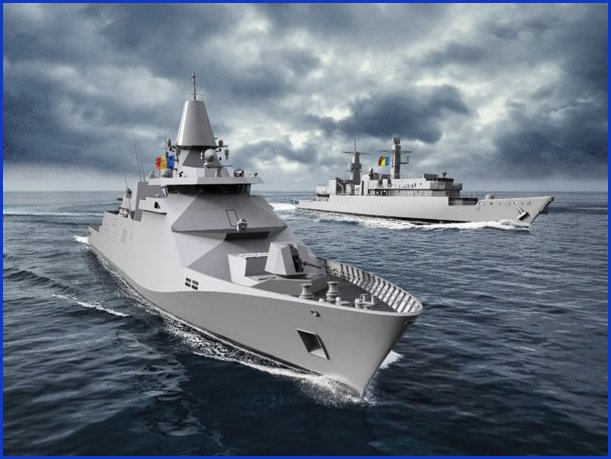
Photo: SIGMA 10514 corvette and modernized T22R frigate / Source: Damen
Damen: “For all four ships, we can deliver them earlier than 7 years” / Situation shipyard Mangalia
“Given the urgency of this program, in the scenario where Damen could be put in the situation to build these ships, I think we can deliver them earlier than 7 years for all four ships, given the capacities we have and the ability to produce ships in parallel in the two shipyards, ” Savu said. “The production capacity in Romania, the capacity to produce ships of great complexity and our own design capacity in Romania, in Galați,” could lead to the delivery of the ships before the contractual terms, Savu added.
Such a contract would practically mean a work front for the Mangalia shipyard, 51% of which is owned by the Romanian state but managed by Damen. “It is unique in Romania, a pioneering project. I can tell you from the experience of the four years that it is a system that works,” said Liana Constantin of Damen Mangalia
Swedish crown princess visits submarine exhibition Rotterdam
Crown Princess Victoria of Sweden visited the SAAB-Damen booth at the Undersea Defense Technology trade show in Ahoy in Rotterdam. The visit underlines the importance attached to the various successful innovative partnerships between the Netherlands and Sweden, including that between SAAB and Damen Shipyards Group to jointly design and build the replacement for the famous Dutch Walrus-class submarines.  The Swedish Crown Princess visited the Netherlands as part of the 60th anniversary of the Swedish Chamber of Commerce for the Netherlands and visited various start-ups and innovative companies on June 7 and 8. In the process, Princess Victoria made one stop at the Undersea Defense Technology fair. At the SAAB-Damen stand, among other things, she was explained their shared ambition to be at the absolute forefront of non-nuclear submarine technology together with the Royal Netherlands Navy and a large number of Dutch SMEs. The further development of submarine know-how in the successor to the Walrus class will give the maritime industry in both countries a huge boost.
The Swedish Crown Princess visited the Netherlands as part of the 60th anniversary of the Swedish Chamber of Commerce for the Netherlands and visited various start-ups and innovative companies on June 7 and 8. In the process, Princess Victoria made one stop at the Undersea Defense Technology fair. At the SAAB-Damen stand, among other things, she was explained their shared ambition to be at the absolute forefront of non-nuclear submarine technology together with the Royal Netherlands Navy and a large number of Dutch SMEs. The further development of submarine know-how in the successor to the Walrus class will give the maritime industry in both countries a huge boost.
Swedish order for Damen
Later that day it was announced that Damen had won a tender from the Swedish Ministry of Defense to supply four ice-strengthened tugs. The 17-meter-long StanTugs 1706 ICE will be delivered next year and deployed in the ports of Stockholm and Karlskrona. Upon completion, the Damen Oskarhamnsvarvet in Sweden will serve as a service hub for these boats, further contributing to the close ties between Damen, Sweden and its defense organization.
Education Sector
Romania has the lowest percentage of young graduates in the EU
While 41% of the European Union’s population between the ages of 25 and 34 had higher education than last year, in Romania the figure is only 25%, according to Eurostat data. EU member states have set a goal of increasing the percentage of the EU’s 25- to 34-year-old population into higher education by 2030. The lowest percentage of the population with tertiary education degrees is registered in Romania (23%), followed by Italy (28%) and Hungary (33%).

Almost half of the EU member states have already reached this goal: Luxembourg, Ireland, Cyprus, Lithuania, the Netherlands, Belgium, France, Sweden, Denmark, Spain, Slovenia, Portugal and Latvia.
There is a clear distinction between men and women among those with higher education: a higher percentage of women (47%) between the ages of 25 and 34 have completed higher education than men (36%). Although the percentage of men with higher education has increased over the past decade, the rate of growth is slower than for women. Only in Romania and Bulgaria is the percentage of men higher than that of women.
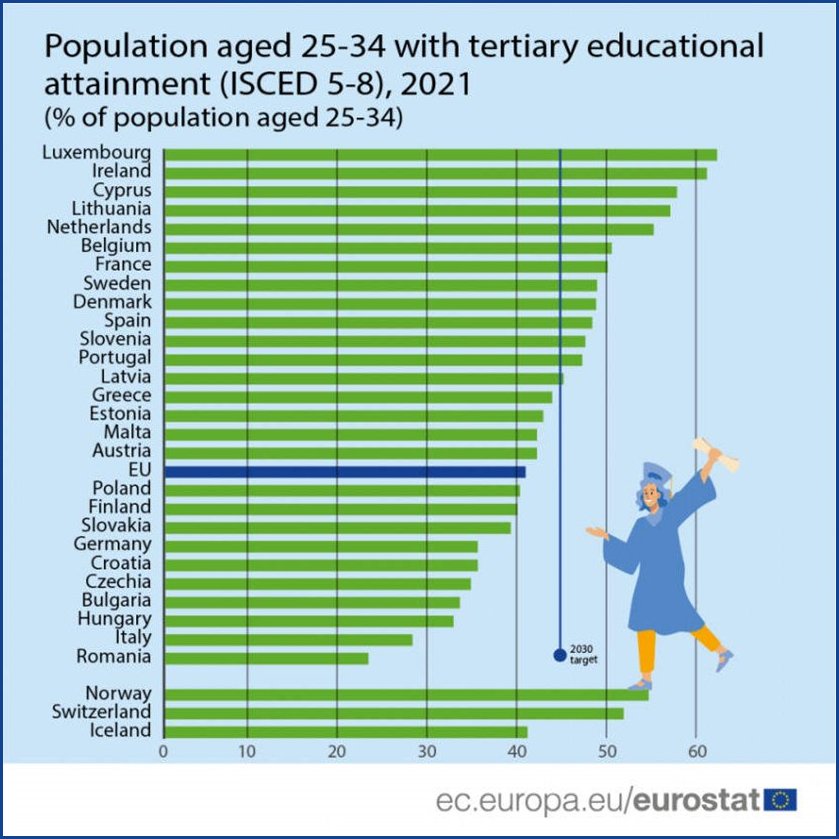
If we analyze the differences between the age groups in the level of education in 2021, there is a clear difference: 37% of the EU population aged 25-54 had completed higher education, compared to 22% for the 55-74 age group.
Newsletter Editor: In our opinion, the analysis does not show that the target group residing abroad is not included in the figures, thus creating a distorted picture.
Public health sector
Alleged oversupply of vaccines vs. low vaccination rates
Romania and nine other Eastern European states have asked the European Commission to renegotiate vaccine contracts for COVID-19 because of the oversupply of doses, the risk of expiration and the difficulty of donating the unused doses. Romania used less than 15% of the total number of vaccines ordered.

On Poland’s initiative, a letter signed by the governments of Bulgaria, Croatia, Estonia, Hungary, Latvia, Lithuania, Romania, Slovakia and Slovenia was addressed to EU Health Commissioner Stella Kyraikides. In it, the group of ten demanded that the number of vaccine doses ordered be reduced or that orders be stopped altogether if vaccines were no longer needed, Politico reported. During the pandemic, the Commission promised to buy 4.2 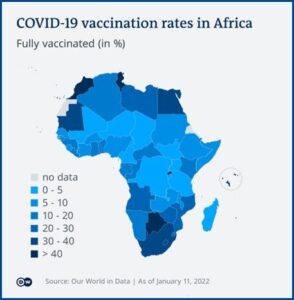 billion doses, ten times the population of the European Union. By February 2022, 1.3 billion had been delivered. The letter’s signatories argue that the initial order far exceeds current demand for vaccines, and that many doses will be delivered near their expiration dates and therefore lost.
billion doses, ten times the population of the European Union. By February 2022, 1.3 billion had been delivered. The letter’s signatories argue that the initial order far exceeds current demand for vaccines, and that many doses will be delivered near their expiration dates and therefore lost.
It turns out that Romania is stuck with some 40 million Covid-19 vaccine doses that it needs to buy. However, the ECDC reveals that the 10 eastern EU member states have the lowest vaccination coverage in the EU. Romania ranks second in the EU, with only 42.3% of the population taking the primary course (two doses of the Pfizer or Moderna vaccine or one injection of the Johnson&Johnson vaccine), compared to the EU average of 72.3%.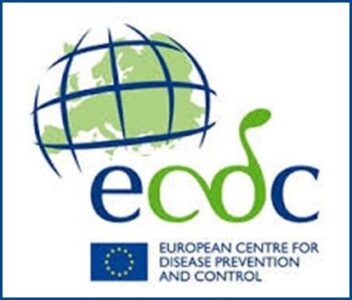 Meanwhile, less than one in 10 Romanians took the booster injection, compared to more than half of the EU population. According to ECDC data, Bulgaria is last in the EU, with only 30% of the population vaccinated.
Meanwhile, less than one in 10 Romanians took the booster injection, compared to more than half of the EU population. According to ECDC data, Bulgaria is last in the EU, with only 30% of the population vaccinated.
It has also proved difficult to donate the extra doses, as African countries, for example, are now struggling not with the lack of doses, but with the logistical challenge of getting vaccines where they are needed. As a result, the African Center for Disease Control has asked for a pause in donations until later this year. Romania ordered 120 million anti-COVID vaccines, according to data presented in July 2021 by former Prime Minister Florin Citu. Of these, it has used less than 17 million doses, according to the latest data on the official platform datelazi.ro. Romania recently began administering the fourth dose of the COVID-19 vaccine, although international health organizations have not yet made recommendations on its necessity.
Geo-political developments
European Commission again calls on Romania, Bulgaria and Croatia to join Schengen area
The European Commission on Tuesday, May 24, reiterated its recommendation that three EU member states: Croatia, Bulgaria and Romania will be admitted to the Schengen area after fulfilling the accession criteria, according to the 2022 Schengen State Report, published on its website on Tuesday.
This is the first time the Commission has presented such a report, following the Schengen Area Strategy adopted last year. The document reiterates “the importance of completing the Schengen area and calls on the Council to take decisions that will allow Croatia, Romania and Bulgaria and Bulgaria to formally become part of this area, as all criteria have been met. The same applies to Cyprus once it has successfully completed the Schengen evaluation process.”
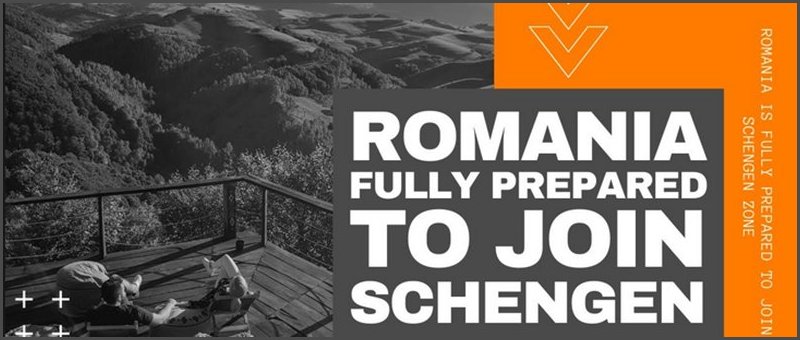
The report on the state of the Schengen area will be the basis for discussions between members of the European Parliament and interior ministers
The report contains a list of priority actions for the period 2022-2023 that need to be addressed at both national and European level, such as the implementation of the new IT architecture and the new interoperability framework for border management; making full use of cross-border cooperation tools; ensuring that all passengers are systematically checked at the external borders; ensuring that FRONTEX uses the full potential of its mandate; abolishing all long-term checks at internal borders and adopting the revised Schengen Borders Code.
The Schengen area without internal border controls is a historic success of European integration. Since its creation in 1985, the Schengen area has brought about a change in the daily lives of millions of people. Nearly 1.7 million people live and work in one Schengen state. People have organized their lives according to the freedoms offered by the Schengen area, with 3.5 million people moving daily from one Schengen state to another.
The entrepreneurs represented in the Dutch Romanian Network, VNO NCW and MKB as well as the Netherlands Romanian Chamber of Commerce have been arguing for accession to Schengen for a decade and had little understanding for politicians who adjusted the rules during the game. They now urge the European Council of Heads of Government to endorse the call at the earliest possible date.
Romanian president expresses support for Ukraine’s EU bid during high-profile visit to Kiev 17 June 2022
“Granting EU candidate status to Ukraine, Moldova and Georgia at next week’s European Council is key to building a strong and sustainable shield around our common values,” Romanian President Klaus Iohannis said Thursday in a joint press conference with top European leaders in Kiev.

Klaus Iohannis accompanied French President Emmanuel Macron, German Chancellor Olaf Scholz and Italian Prime Minister Mario Draghi during their visit to the Ukrainian capital, where they visited suburbs bombed by Russian invaders and met with Ukrainian President Volodimir Zelensky. “We will continue to find comprehensive solutions and measures to help Ukraine resist and repel the Russian threat. Today’s exchange of views focused on the need for peace and efforts to rebuild the future of this country, ‘ Iohannis explained, referring to Romania’s support measures for Ukraine and the many refugees who have crossed over from the neighboring country. Klaus Iohannis also condemned Russian operations to block Ukraine’s grain exports, which have global effects.
Financial Economic Developments
Lagarde: ECB likely to give up negative interest rates in September
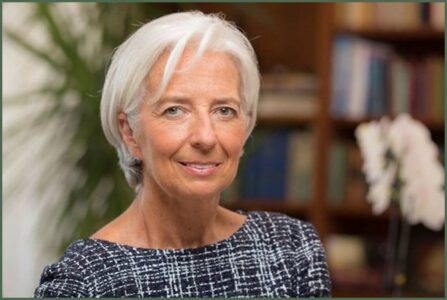 The European Central Bank (ECB) is likely to abandon negative interest rates by the end of September, said Christine Lagarde, president of the institution. The ECB president also reiterated that interest rate hikes would begin in July. Today’s commentary suggests that the ECB is planning two 25 basis point increases at each of its monetary policy meetings in July and September. Bogdan Maioreanu,: These positive increases will have a direct impact on benchmark interest rates. That is one of the nightmares of central banks “I expect net acquisitions of APP assets to end very early in the third quarter. This would allow us to raise interest rates at the July meeting, in line with our future guidelines. Based on the current outlook, it is likely that by the end of the third quarter negative interest rates will increase,” Lagarde told Bloomberg. As inflation is almost four times higher than the ECB’s 2% target, the institution is expected to raise the deposit rate in July from the current level of -0.5%.
The European Central Bank (ECB) is likely to abandon negative interest rates by the end of September, said Christine Lagarde, president of the institution. The ECB president also reiterated that interest rate hikes would begin in July. Today’s commentary suggests that the ECB is planning two 25 basis point increases at each of its monetary policy meetings in July and September. Bogdan Maioreanu,: These positive increases will have a direct impact on benchmark interest rates. That is one of the nightmares of central banks “I expect net acquisitions of APP assets to end very early in the third quarter. This would allow us to raise interest rates at the July meeting, in line with our future guidelines. Based on the current outlook, it is likely that by the end of the third quarter negative interest rates will increase,” Lagarde told Bloomberg. As inflation is almost four times higher than the ECB’s 2% target, the institution is expected to raise the deposit rate in July from the current level of -0.5%.
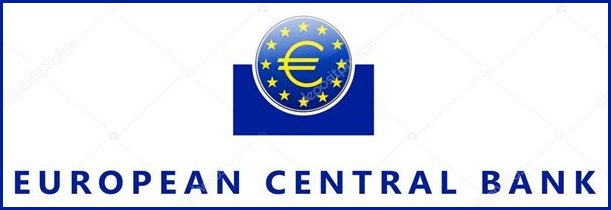
Whereas last week the head of De Nederlandsche Bank, Klaas Knot, was still talking about the possibility of a possible interest rate increase of half a percentage point, Lagarde has repeatedly indicated that the normalization of policy will take place gradually. “This means that it is reasonable to act step by step, taking into account the effects on the economy and the inflation outlook if interest rates rise,” Lagarde said.
Disclaimer

The newsletter of the Dutch Romanian Network is compiled with great care. The Dutch Romanian Network cannot accept any liability for a possible inaccuracy and/or incompleteness of the information provided herein, nor can any rights be derived from the content of the newsletter. The articles do not necessarily reflect the opinion of the board.
